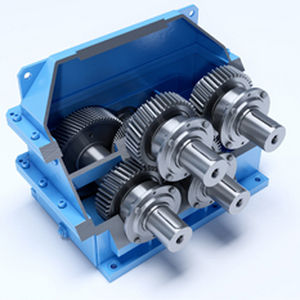 5 reasons to choose the right lubricating grease for your component
5 reasons to choose the right lubricating grease for your component
Your project is perfect! Start wondering what's wrong! Have you ever wondered why a mechanical organ without lubrication cannot work? Why is its residual life reduced by 95% in the absence of lubrication?
And again, why can a correct choice of lubricant guarantee smooth operation, longer life and up to 30% higher performance? If you think that your mechanical project is ok but still do not get the results you want, continue reading the article, we will explain the 5 most frequent causes of malfunctions determined by an inappropriate choice of lubricated fluid, perhaps you are not considering the variables of vital importance: the one who has to wrap and protect surfaces in friction and reciprocal movement. The lubricating fluid. Invest 5 minutes of your time!
After analyzing thousands of different mechanical devices, bearings, reduction units, hinges, gears, electrical connections, drive chains, actuators, cylinders, pneumatic valves and so on, we have that: The lubricating fluid is the most underestimated component during the design phase . All time. (almost). And you, the designer, are responsible for it. The numbers speak for themselves, SKF teaches us that 36% of bearing failures are caused by inadequate lubrication. And the statistics worsen for those components where it is not possible to foresee operations to restore the lubricating film in the friction points.
In practice, those mechanical devices that work for their entire existence without ever being "overhauled" and therefore a maintenance cycle is not foreseen.
Here your choice, dear designer, is essential for correct operation, because no one can handle the components in operation anymore !!
If the choice of lubricant is not always easy, it is rather immediate the identification of the causes that can lead to premature breakage or irregular functioning. Individually or in combination they can be destructive. Here are 5:
1) Ineffective lubrication at low temperatures
The reduction of the operating temperature produces an increase in the internal friction of a lubricant with consequent loss of smoothness properties as you go down the thermal scale. Below are the temperatures at which the main families of lubricating oils (mineral and synthetic) without additives lose their smoothness (pour point). Freezing occurs after a couple of degrees.
Pour point values compared to mineral oil and synthetic oils
- Viscosity at 40 ° C - 40cst

The increase in friction and above all in cold starts cause an increase in the risk of tearing of the surfaces in contact and consequent mechanical wear. Repeated cold starts can cause rapid deterioration and malfunctions.
When the operating temperatures drop below -20 ° C it is advisable to evaluate a synthetic lubricant solution.
2) Poor resistance to loads
A recurring situation in mechanics is the incorrect evaluation of the load conditions to which the friction surfaces are subjected. When the mechanical parts perform their function within more complex devices (eg window lifter motor in a car) the load conditions to which the systems are subject cannot always be predicted, a correct design can certainly anticipate unexpected events, but the presence of a high load capacity lubricant can certainly provide an additional barrier. Here we tell what the most important characteristics of a lubricating fluid with a high load capacity must be.
3)Incompatibility of the lubricant with rubber and plastic parts
4)Incorrect dosing on the friction point: automatic lubricator
Are the devices produced on-line assembled semi-automatically, is lubrication often done manually or through an automatic dosing system?
I If in the first case obviously human error is intrinsic in the action, in the second make sure that the system has a control over the quantity by volume dosed, an excess of lubricant as well as a low quantity can both be harmful.
5)Ineffective lubrication at high temperatures
We have explored in this page what are the effects of high temperatures on lubricants, what vicious circle is triggered and how the lubricant formulation can be improved through additives and the use of synthetic lubricating oils.
It is important for the designer to know as accurately as possible in which temperature range the device is operating, over 120 ° C the decay phenomena can be very rapid and destructive.
6) High coefficient of friction
The use of a lubricating solution which is often a consequence of other phenomena mentioned above, however it is worth considering that a lubricating fluid that loses its properties of separation of the friction surfaces after a large% of the oil has evaporated base becomes a brake !


